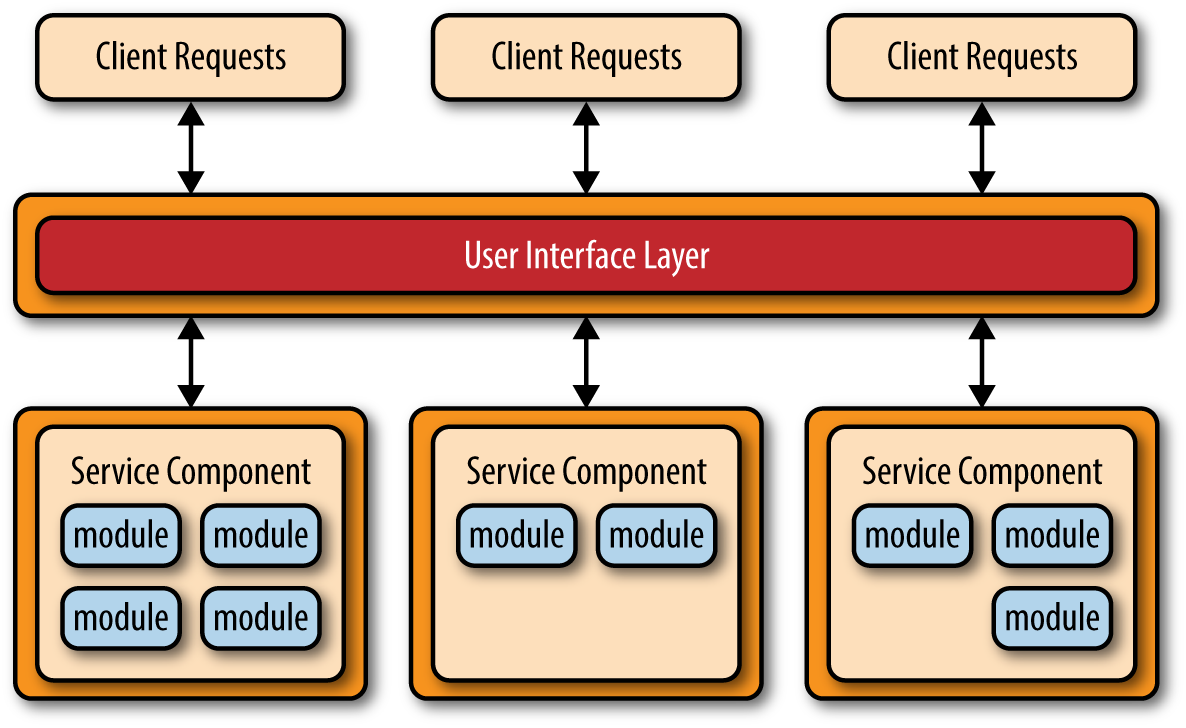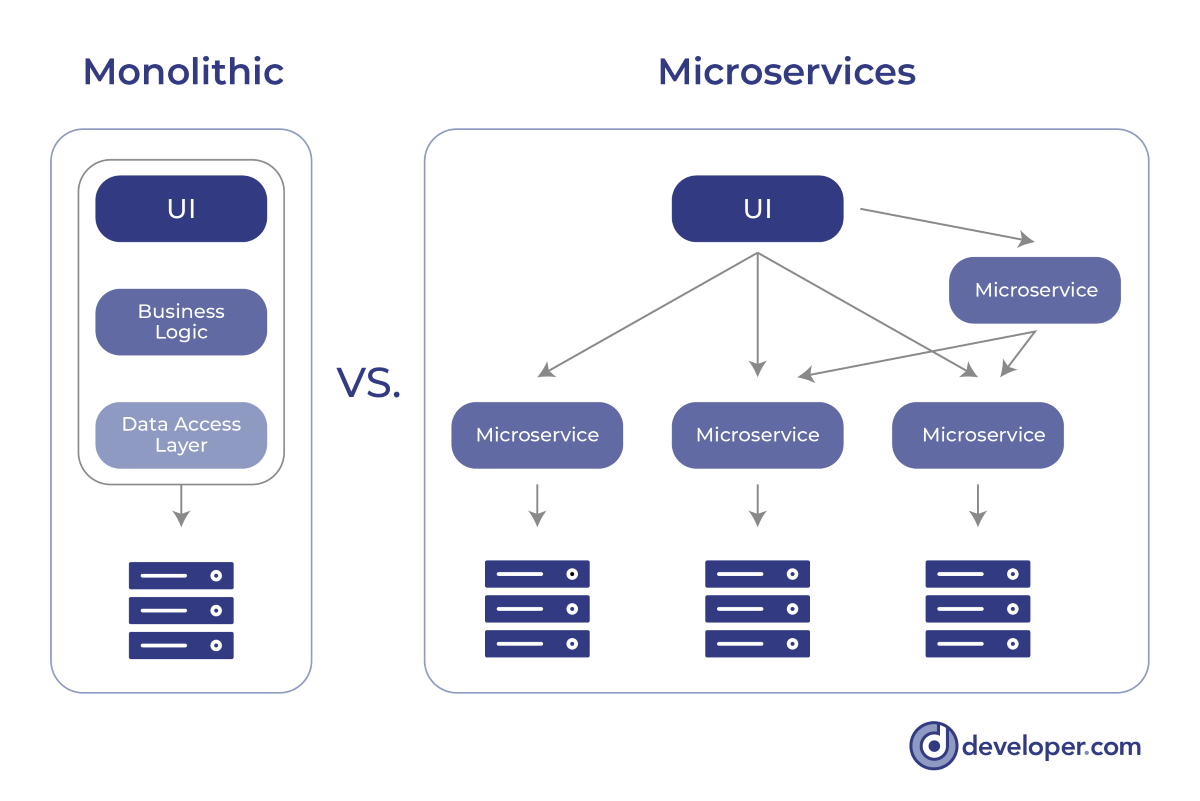Table Of Content

Microservices are the go-to solution for all the major software development projects. In a traditional monolithic application, you would have a single database that all services interact with. However, in a microservices architecture, each service has its own database. In a microservices architecture, you employ the circuit breaker pattern to monitor the interaction between services. If a service is failing or responding slowly, the circuit breaker trips and prevents further calls to the service, thus preventing a system-wide failure. Once the service is back up, the circuit breaker resets, and things go back to normal.
Building Scalable Application on Cloud
Backend for Front-End (BFF) is a subset of the API Gateway microservices design pattern. It involves creating a dedicated backend service tailored to the specific needs of a front-end application or client. This pattern ensures a more efficient and streamlined interaction between a system’s frontend and backend components. Since each microservice is autonomous, each service has a separate database.
Cross-cutting concern patterns
However, developers should be mindful that the CQRS pattern has the potential for code duplication, which can introduce redundancies and add complexity. Infrastructure as code is the approach to defining computing and network infrastructure through source code that can then be treated just like any software system. Such code can be kept in source control to allow auditability and ReproducibleBuilds, subject to testing practices, and the full discipline of ContinuousDelivery. It's an approach that's been used over the last decade to deal with growing CloudComputing platforms and will become the dominant way to handle computing infrastructure in the next. It makes it easy to use the Saga pattern to manage transactions and the CQRS pattern to implement queries. There are many issues that you must address when designing an architecture.
Design Pattern Proposal for Autoscaling Stateful Systems - InfoQ.com
Design Pattern Proposal for Autoscaling Stateful Systems.
Posted: Wed, 25 Jan 2023 08:00:00 GMT [source]
What are Microservices Design Patterns?
Modern Microservice Architecture: Design Principles - Хабр
Modern Microservice Architecture: Design Principles.
Posted: Sat, 27 Aug 2022 07:00:00 GMT [source]
Scaling frontend development so that many teams can work simultaneously on a large and complex product is even harder. As well as talking about the various benefits and costs, we'll cover some of the implementation options that are available, and we'll dive deep into a full example application that demonstrates the technique. There are many other patterns used with microservice architecture, like Sidecar, Chained Microservice, Branch Microservice, Event Sourcing Pattern, Continuous Delivery Patterns, and more.
What patterns are used in microservices?
To accomplish this successful transfer from monolith to microservices, a facade interface is used by developers that allows them to expose individual services and functions. The targeted functions are broken free from the monolith so they can be “strangled” and replaced. An orchestration approach will perform transactions and publish events using an object to orchestrate the events, triggering other services to respond by completing their tasks. The orchestrator tells the participants what local transactions to execute. Using the choreography approach, a service will perform a transaction and then publish an event. In some instances, other services will respond to those published events and perform tasks according to their coded instructions.
Pattern: Microservice Architecture
Microservices have revolutionized the world of application development, breaking down large, monolithic systems into smaller, more manageable components. The architectural style, characterized by independent, loosely-coupled services, brings numerous advantages from scalability and modularity to increased flexibility. This is accomplished by replacing old functionality with a new service — and, consequently, this is how the pattern receives its name. Once the new service is ready to be executed, the old service is “strangled” so the new one can take over.
Best of 2023: 5 Microservices Design Patterns Every DevOps Team Should Know
In addition, a health check by the registry will ensure the availability of only working instances. These subdomain models have a defined scope of functionality known as bounded context. This bounded context is the parameter used to create each microservice, thus overcoming the issues of common classes.
We have talked about resolving the aggregating data problem in the API Gateway Pattern. When breaking the business functionality into several smaller logical pieces of code, it becomes necessary to think about how to collaborate the data returned by each service. This responsibility cannot be left with the consumer, as then it might need to understand the internal implementation of the producer application. There are many patterns related to the Microservices architecture pattern.
This scenario is common in a Kubernetes environment that uses the Horizontal Pod Autoscaler (HPA) to accommodate scaling demands. Each time a container is created, an IP address is assigned dynamically. There are even situations where port numbers will be assigned dynamically too. One of the key benefits of a microservice carrying its own data is that it enforces all of the other principles. In addition, the users have to bear the load of remembering every URL for the services, which become tightly coupled. The Sidecar Microservice Design Pattern is an architectural pattern that enhances the functionality and capabilities of a primary service by deploying an auxiliary service, known as a “sidecar,” alongside it.
Then, all the attempts to invoke the remote service will fail in this timeout period. Once that time period is finished, the circuit breaker will allow a limited number of tests to pass through and if those requests succeed, the circuit breaker resumes back to the normal operation. In a microservices architecture, each service exposes a set of fine-grained APIs. Managing these APIs individually can be a daunting task, especially when your application consists of dozens or even hundreds of microservices. As a result, this principle that a microservice is ephemeral has two basic implications. The first is that developers need to create microservices that are good citizens in the application domain.
Microservices solve these specific issues by having each microservice run as a separate process. If one cog goes down, it doesn’t necessarily mean the whole machine stops running. Plus, diagnosing and fixing defects in smaller, highly cohesive services is often easier than in larger monolithic ones.

As a best practice to prevent chaos, we should have a master logging service. This master logging service should aggregate the logs from all the microservice instances. Just as a ship is divided into watertight compartments to prevent it from sinking if one part is breached, an application can be divided into isolated groups to protect it from failures.
Each of these is accompanied by an event that will trigger the next stage. For stable, highly scalable systems, they should communicate asynchronously by exchanging ‘events’. The command query responsibility segregation (CQRS) pattern can be useful if you have a large application reading data from an event store.
An aggregator design pattern is used to collect pieces of data from various microservices and returns an aggregate for processing. Although similar to the backend-for-frontend (BFF) design pattern, an aggregator is more generic and not explicitly used for UI. The saga pattern is an alternative solution to other design patterns that allows for multiple transactions by giving rollback opportunities. This pattern is a communication approach in which microservices interact using message-based protocols, decoupling the sender and receiver. This pattern allows services to operate independently, improving scalability, and resilience.
If you're already successfully running a monolith, adopting microservices is asignificant investment cost for your team. Different teams implement theprinciples of microservices in different ways. Each engineering team has uniqueoutcomes for how small their microservices are, or how many microservices theyneed. Diagram of an ecommerce application with functional areasimplemented by microservices. Quality is also improved with OpenLegacy’s innovative approach, as microservices make for a much cleaner testing process (their simpler build makes it easier to review their code).
Over time, new features are developed, or existing ones are refactored and implemented as microservices. Monitoring performance is an essential aspect of a successful microservice architecture. It helps calculate the efficiency and understand any drawbacks slowing the system down.











